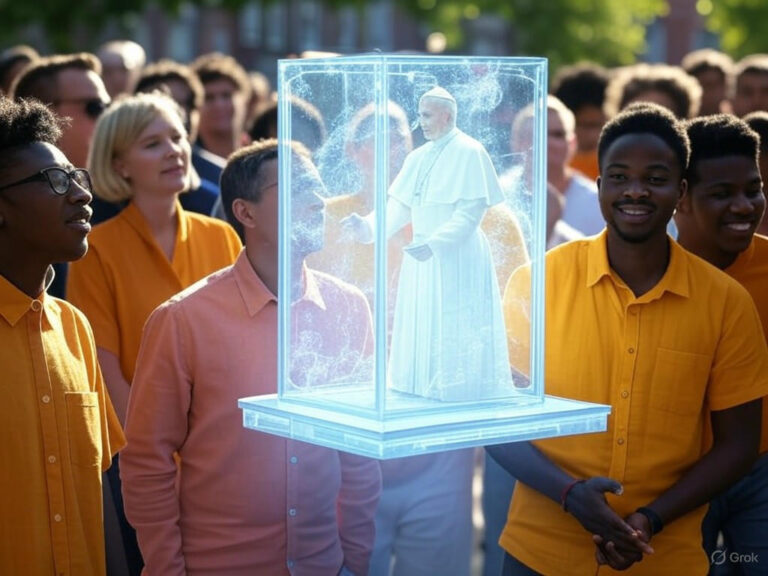
Protests at Columbia University Lead to Multiple Arrests
The Latest Columbia University Protests: Occupation of Butler Library
Columbia University protests have once again thrust the campus into the national spotlight, with over 100 demonstrators taking over a reading area in Butler Library on May 7, 2025. Organized by the group Columbia University Apartheid Divest (CUAD), this bold move led to a rapid police response and multiple arrests, highlighting ongoing debates about student activism and institutional oversight. As tensions mount amid pro-Palestinian demonstrations, the event echoes similar clashes from previous years, drawing attention to how these actions challenge university norms and federal expectations.
At the heart of these Columbia University protests is a demand for the institution to address its ties to geopolitical conflicts, particularly the Israel-Hamas situation. Have you ever wondered how a single protest can ripple through an entire community? In this case, it started with masked protesters entering the library, disrupting exams and daily routines, only to escalate into a full-scale standoff with authorities.
Timeline of the Columbia University Protests at Butler Library
Demonstrators, many in masks and keffiyehs, flooded into Butler Library on that Wednesday afternoon, claiming a reading room as their stage for chants and banners. This occupation, which they dubbed “Al-A Popular University” in tribute to a Palestinian author, aimed to spotlight Columbia’s alleged complicity in global issues. It wasn’t long before the scene turned chaotic, with drums beating and slogans echoing through the halls, forcing students to abandon their study spots.
The university’s public safety team stepped in first, but they were quickly outnumbered when outsiders tried to join the fray. Two officers ended up injured in the scuffle, a moment that Acting President Claire Shipman called “outrageous” in her statement. If you’ve experienced a protest up close, you know how quickly things can escalate from peaceful assembly to something more intense.
Police Involvement in the Columbia University Protests
With safety at stake, Columbia’s administration called in the New York Police Department (NYPD), whose officers arrived in riot gear to clear the area. At least 75 people were arrested for refusing to leave, many handcuffed and escorted onto buses as videos of the scene spread online. According to reports from Politico, the NYPD issued warnings before making arrests, emphasizing that non-compliance wouldn’t be tolerated.
This response marks a shift in how Columbia University protests are handled, reflecting new policies designed to prevent disruptions. It’s a reminder that while activism can drive change, it often walks a fine line with public safety rules—something every student activist should consider before taking to the streets.
Official Reactions to the Columbia University Protests
Acting President Claire Shipman was quick to condemn the events, pointing to the involvement of non-university affiliates as a key concern. In her statement, she stressed that such disruptions violate campus policies and won’t be overlooked, especially during exam season. New York City Mayor Eric Adams echoed this on social media, supporting peaceful protest but drawing a hard line against any form of lawlessness.
These responses highlight the broader context of Columbia University protests, where administrative decisions are increasingly shaped by external pressures. For instance, could stricter rules have prevented this? It’s a question worth pondering as universities nationwide rethink their approaches to activism.
Context Behind the Escalating Columbia University Protests
The protests didn’t emerge in a vacuum; they’re tied to recent policy shifts and the Trump administration’s decision to withhold $400 million in federal funding over antisemitism allegations. This has pushed Columbia to enforce tougher measures, like bans on masks during demos and swift crackdowns on occupations. Imagine if your school faced similar funding cuts—how might that change the campus vibe?
This incident also connects to Columbia’s rich history of activism. Back in 1968, students occupied buildings to protest the Vietnam War, leading to over 700 arrests and a campus shutdown. Fast-forward to 2024, and we’re seeing echoes of that era, with recent events marking 56 years since those pivotal days. Understanding this history can help us appreciate why Columbia University protests continue to make waves today.
Effects on the Campus Community from Columbia University Protests
These latest Columbia University protests have left students divided, with many frustrated by the interruption to their studies right before finals. The university has promised disciplinary actions, potentially including suspensions, against involved students—a move that’s sparked debates about fairness and free speech. Safety concerns are now at the forefront, especially after the injuries to staff.
It’s easy to see how such events can shake a community. For example, if a protest disrupted your daily routine, you’d likely feel a mix of solidarity and annoyance. Moving forward, Columbia must balance supporting expression with maintaining a secure environment for everyone.
Wider Impact of Columbia University Protests on Activism
Beyond the ivy-covered walls, these Columbia University protests are prompting a national conversation about the limits of campus activism. Universities are reevaluating policies on protests, influenced by federal funding and safety protocols. This situation underscores how external factors, like government oversight, can reshape institutional responses.
Media coverage has amplified the story, with outlets from local news to social platforms sharing footage that divides public opinion. Some applaud the protesters’ passion, while others criticize the tactics—mirroring societal splits on issues like the Israel-Hamas conflict. What are your thoughts on this? Is disruption a necessary tool for change, or does it go too far?
Future Outlook for Columbia University Protests
As Columbia navigates the fallout, the focus is on restoring normalcy while addressing underlying grievances. The administration’s firm stance suggests more crackdowns could be on the horizon, but unresolved issues mean these Columbia University protests might not end anytime soon. For students and faculty, this is a chance to advocate for meaningful dialogue rather than escalation.
Consider this: What if universities offered more structured ways for students to voice concerns? That could turn heated protests into productive discussions, fostering real progress. Either way, the world is watching how Columbia handles this, as it could set precedents for other campuses.
The Importance of Journalism in Covering Columbia University Protests
Journalism plays a vital role in events like these Columbia University protests, providing context and keeping the public informed. Publications such as the Columbia Daily Spectator offer on-the-ground insights, while national outlets document the broader implications. This coverage not only shapes public perception but also preserves these moments for future reflection, much like historical reports on Watergate or Vietnam-era activism.
By highlighting diverse voices, journalism encourages empathy and informed debate. If you’re passionate about these issues, staying updated through reliable sources can empower you to engage thoughtfully in the conversation.
Final Thoughts
In wrapping up, the May 7th Columbia University protests serve as a stark reminder of the passions driving modern activism. With arrests made and policies tested, it’s clear that balancing free expression with campus safety remains a complex challenge. As we look ahead, let’s remember that every protest tells a story— one that could inspire positive change if handled with care.
What steps do you think universities should take to support activism without compromising safety? I’d love to hear your views in the comments below, or share this post if it sparked your interest. For more on campus dynamics, check out our related articles on student rights and global issues.
References
- Politico. (2025). Protesters occupy Columbia University. Retrieved from https://www.politico.com/news/2025/05/07/protesters-occupy-columbia-university-00335207
- Axios. (2025). Columbia University protest arrests by NYPD. Retrieved from https://www.axios.com/2025/05/08/columbia-university-protest-arrests-nypd
- YouTube Video. (2025). [Video footage of protests]. Retrieved from https://www.youtube.com/watch?v=lsyU62iQDLA
- Instagram Post. (2025). [Social media coverage]. Retrieved from https://www.instagram.com/p/DJXy1qFRLlB/
- Zinn Education Project. (n.d.). Columbia student occupation. Retrieved from https://www.zinnedproject.org/news/tdih/columbia-student-occupation/
- ACCC. (n.d.). The impact of digital platforms on news. Retrieved from https://www.accc.gov.au/system/files/ACCC+commissioned+report+-+The+impact+of+digital+platforms+on+news+and+journalistic+content,+Centre+for+Media+Transition+(2).pdf
- Wikipedia. (n.d.). Student activism at Columbia University. Retrieved from https://en.wikipedia.org/wiki/Student_activism_at_Columbia_University
- URBE University. (n.d.). [Historical document]. Retrieved from https://omeka.urbeuniversity.edu/files/original/d08b58d6396a5730fc579dfbfa24ed49094fccd9.pdf







